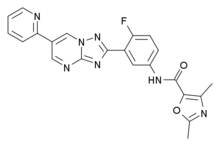A major milestone was reached when nusinersen, an investigational treatment for spinal muscular atrophy (SMA), was shown to significantly improve achievement of motor milestones in babies with infantile-onset SMA, according to an interim analysis of the double-blind, randomized, placebo controlled Phase 3 clinical trial called ENDEAR. Babies born with SMA, a genetic disorder affecting nerves that control muscle movement, cannot hold up their heads, roll over or sit up independently. They often do not survive beyond 2 years of age. Thirty-six centers around the world participated in the study, including Ann & Robert H. Lurie Children's Hospital of Chicago, which had the highest patient enrollment.
"This landmark study provides the most robust type of evidence that nusinersen, which targets the genetic defect in SMA, safely and effectively helps infants with this condition gain muscle function," said Nancy Kuntz, MD, Principal Investigator (PI) at Lurie Children's, Medical Director of Mazza Foundation Neuromuscular Program and Associate Professor of Pediatrics and Neurology at Northwestern University Feinberg School of Medicine. "This might be a promising therapy for this devastating disorder."
Based on these positive findings and safety profile, the trial will be stopped early and nusinersen will be the first SMA treatment to be filed for FDA approval. Patients in the study will be transitioned into an open label study in which all infants will receive nusinersen. Biogen, the sponsoring company, is working to open a global expanded access program for eligible patients with infantile-onset SMA in the coming months.
"Going forward, we could add SMA to the newborn screening panel and treat infants in the pre-symptomatic phase," said Leon Epstein, MD, Co-PI at Lurie Children's, Division Head of Neurology, Medical Director of the Clinical Research Unit of Stanley Manne Children's Research Institute at Lurie Children's, and Professor of Pediatrics and Neurology at Northwestern University Feinberg School of Medicine.
Due to a genetic defect, infants with SMA do not produce enough survival motor neuron (SMN) protein, which is critical for the maintenance of motor nerve cells. Nusinersen is designed to increase production of fully functional SMN protein by regulating gene expression. The investigational treatment is delivered to the fluid around the spine by lumbar puncture, or spinal tap. Repeated doses are needed.
"The success we saw in the trial is incredibly exciting for families of infants with SMA, as well as for physicians who care for these children," said Kuntz.
Ref : http://www.chemspider.com/Chemical-Structure.34983394.html







